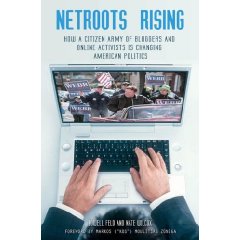 A few years ago, Richard Rodriguez wrote a book entitled, "Brown: The Last Discovery of America." In an interview on the PBS NewsHour, Rodriguez explained, "when I speak of the brown in America, of America, I mean the mixing of all of us." Rodriguez added that this used to be "a black-and-white country," but that "Hispanics were suddenly announced by the Richard Nixon Administration...as a new minority," along with Asians, and "We were suddenly... there was suddenly these new colors -- not simply white, black, but also red, yellow, brown."Last night and this morning, as I looked at the new Census numbers for Virginia, I thought of Richard Rodriguez and his book, "Brown." Along these lines,NLS has been looking at the numbers, and what he's found is fascinating. For instance, that "[a]t the current rate, Virginia will be a majority-minority state by the 2030 census. Much quicker than was expected." Also, that "Over 60% of Virginians under the age of 18 are non-white according to the 2010 census." And finally, that "When I say majority-minority in total growth I mean growth in all groups besides whites and [H]ispanics. That's AfrAmer, Asians and Multirace." A few years ago, Richard Rodriguez wrote a book entitled, "Brown: The Last Discovery of America." In an interview on the PBS NewsHour, Rodriguez explained, "when I speak of the brown in America, of America, I mean the mixing of all of us." Rodriguez added that this used to be "a black-and-white country," but that "Hispanics were suddenly announced by the Richard Nixon Administration...as a new minority," along with Asians, and "We were suddenly... there was suddenly these new colors -- not simply white, black, but also red, yellow, brown."Last night and this morning, as I looked at the new Census numbers for Virginia, I thought of Richard Rodriguez and his book, "Brown." Along these lines,NLS has been looking at the numbers, and what he's found is fascinating. For instance, that "[a]t the current rate, Virginia will be a majority-minority state by the 2030 census. Much quicker than was expected." Also, that "Over 60% of Virginians under the age of 18 are non-white according to the 2010 census." And finally, that "When I say majority-minority in total growth I mean growth in all groups besides whites and [H]ispanics. That's AfrAmer, Asians and Multirace."In other words, Virginia is turning "Brown" before our eyes, and at an extremely rapid pace. That's fascinating in and of itself, as is watching the desperate, futile reaction by (mostly) Republicans to try and hold back the tidal wave (e.g., see Stewart, Corey and his infamous, Orwellian "Rule of Law" resolution in Prince William County). Of course, this is a progressive political blog, so of course we care about the political implications of Virginia's changing demographics. I've got a few thoughts on that after the "flip." |
| lowkell :: Forget "Red" or "Blue" Virginia, How About "Brown" Virginia? |
| The question is, as Virginia moves from "white" and "black" to Richard Rodriguez's "brown," what does that indicate for whether Virginia goes "red," "purple," or "blue" politically? Obviously, if current voting patterns hold, it's not good news for Republicans, as "brown" people tend to vote Democratic, usually by large if not enormous majorities. Thus, according to Pew, "Hispanics voted for Democrats Barack Obama and Joe Biden over Republicans John McCain and Sarah Palin by a margin of more than two-to-one in the 2008 presidential election, 67% versus 31%." Also in 2008, 96% of African Americans voted Democratic. Finally, Asian Americans went 62%-35% Democratic in 2008. In fact, whites were the only major racial or ethnic group to vote Republican in 2008, by a 55%-43% margin, but that wasn't nearly enough to overcome the enormous edge Obama racked up over McCain among "brown" America.But wait, you ask, what about 2009 and 2010, when Republicans won big, why did that happen if "brown" is going "blue?" Simple: because political participation among non-whites is lagging the (rapid) growth in their population, in states ranging from California to Texas to Virginia. Add to that the "enthusiasm gap" of 2009-2010, as well as a natural snapback from huge Democratic gains of 2005-2008, and that largely explains what happened in 2009 and 2010. In short, the key to Republican victories here in Virginia in 2009 and 2010 was that it was a completely different electorate than in 2008 - whiter, older (because young people - many if not most of whom are "brown" - also are trending strongly Democratic), less urban, and therefore more conservative and more Republican. If 2009 and 2010 had had the same electorate as 2008, the results would have been wildly different. Eventually, of course, voter participation rates between "white" and "brown" are likely to converge, not just in "presidential" election years but also in "midterm" or even "off-off years" (e.g., 2011 and 2013 in Virginia). At that point, Virginia will be highly unlikely to be a "red" state (except, of course, in the unlikely event that Republicans drastically change their approach to issues of concern to African Americans, Hispanics, and Asians) and probably not even "purple," but more likely a "blue" or "purplish-blue" Virginia that is simultaneously "brown." I, for one, believe that day can't come soon enough. |

